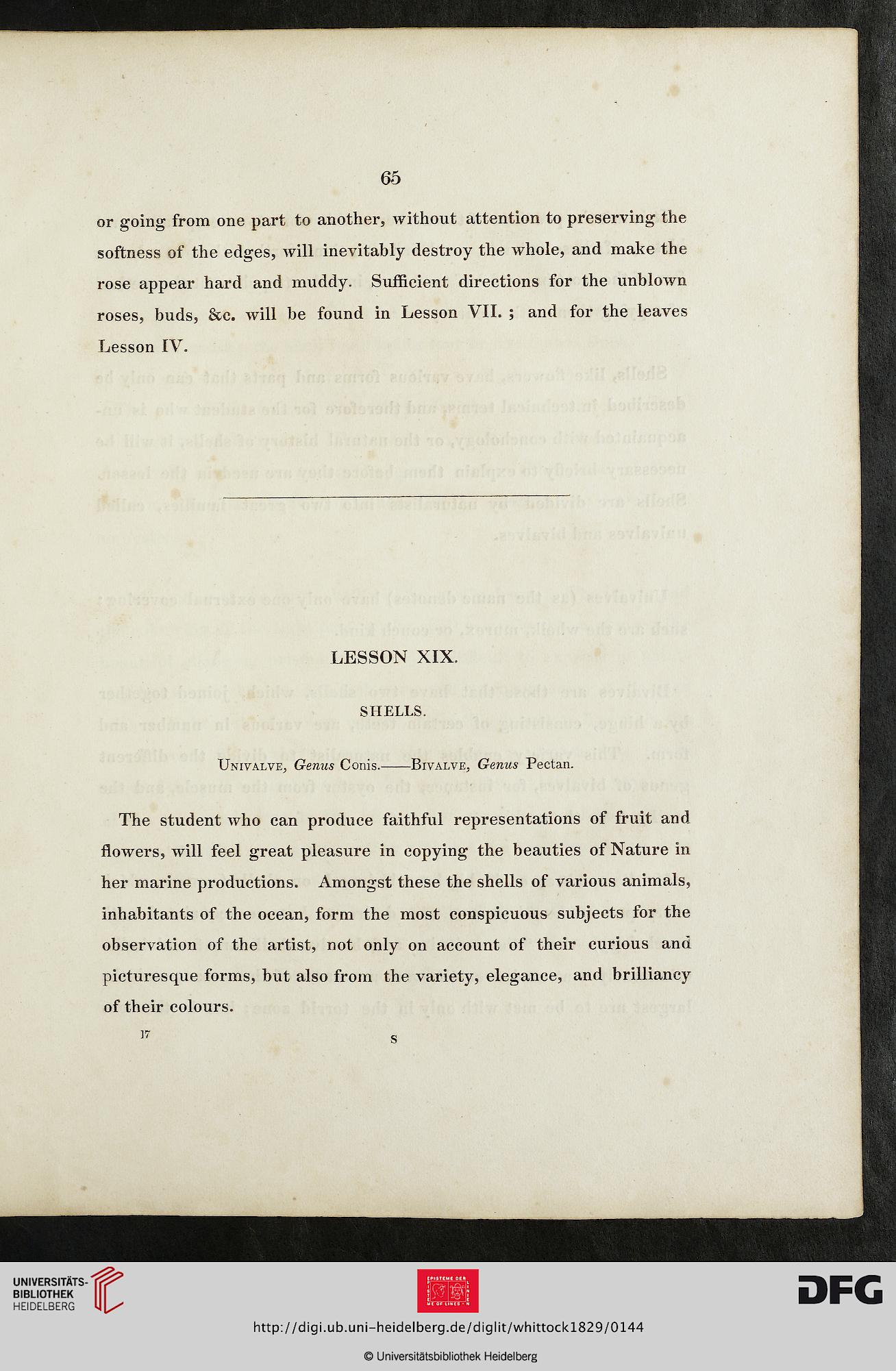65
or going from one part to another, without attention to preserving the
softness of the edges, will inevitably destroy the whole, and make the
rose appear hard and muddy. Sufficient directions for the unblown
roses, buds, &c. will be found in Lesson VII. ; and for the leaves
Lesson IV.
LESSON XIX.
SHELLS.
Univalve, Genus Conis. Bivalve, Genus Pectan.
The student who can produce faithful representations of fruit and
ssowers, will feel great pleasure in copying the beauties of Nature in
her marine productions. Amongst these the shells of various animals,
inhabitants of the ocean, form the most conspicuous subjects for the
observation of the artist, not only on account of their curious and
picturesque forms, but also from the variety, elegance, and brilliancy
of their colours.
]7
s
or going from one part to another, without attention to preserving the
softness of the edges, will inevitably destroy the whole, and make the
rose appear hard and muddy. Sufficient directions for the unblown
roses, buds, &c. will be found in Lesson VII. ; and for the leaves
Lesson IV.
LESSON XIX.
SHELLS.
Univalve, Genus Conis. Bivalve, Genus Pectan.
The student who can produce faithful representations of fruit and
ssowers, will feel great pleasure in copying the beauties of Nature in
her marine productions. Amongst these the shells of various animals,
inhabitants of the ocean, form the most conspicuous subjects for the
observation of the artist, not only on account of their curious and
picturesque forms, but also from the variety, elegance, and brilliancy
of their colours.
]7
s




